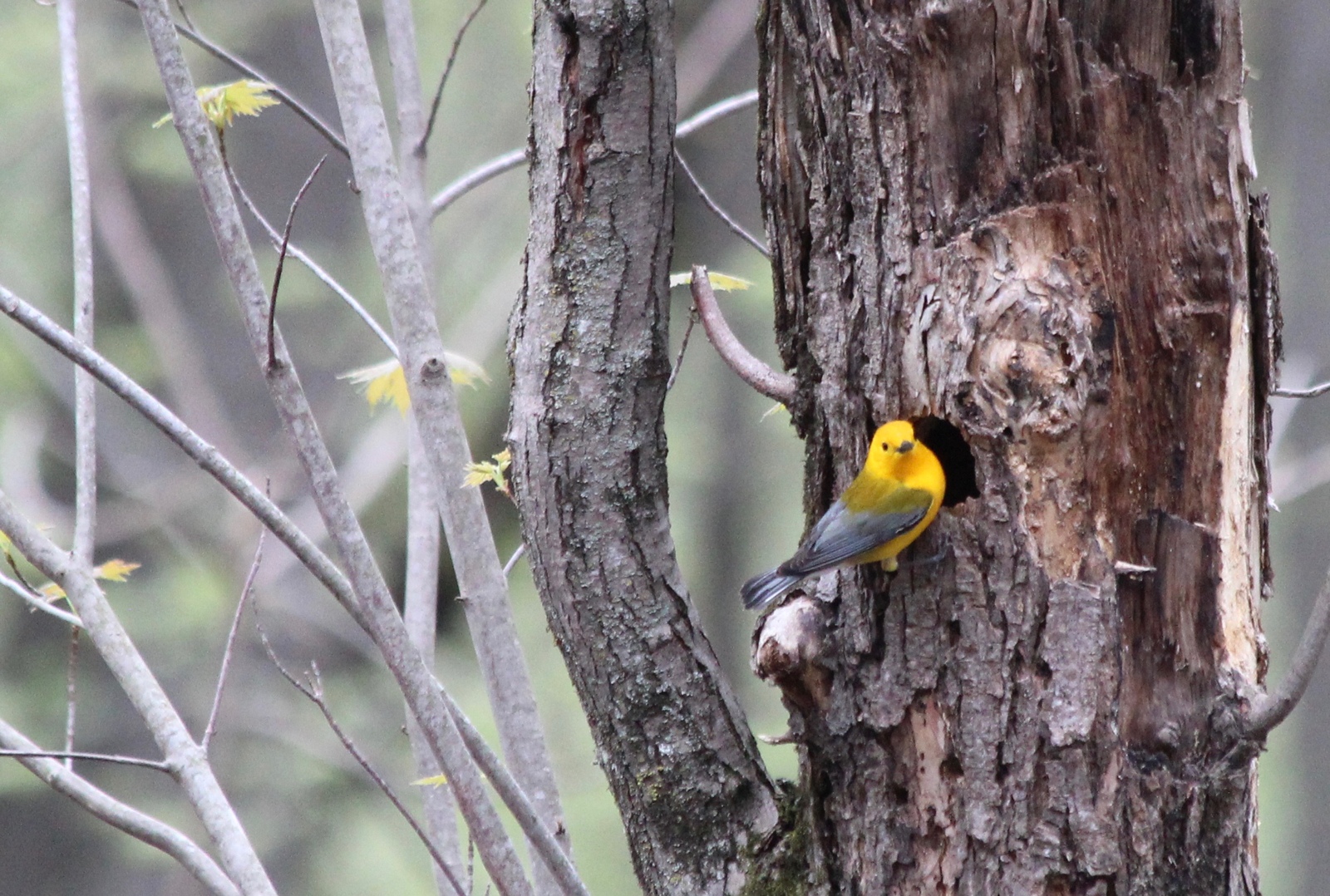
Astronomy
On the 18th and 19th look for Saturn near the Moon in the eastern sky before sunrise.
Birds
Robins are having a second brood of babies. Watch for young robins following the parents around and begging for food. They have spotted breasts for camouflage to hide them from predators. And you may see eggshells beneath a nest. They’re a beautiful color called . . . robin’s egg blue!
Did you ever wonder how the American Robin got its name? Its red breast reminded Europeans of the European Robin. The European Robin is smaller than the American Robin, but like our Robin it has a red breast. You won’t see a European Robin at Afton, but you might if you travel to the British Isles or the European continent.
Near the water, look for Great Blue Herons, Black-crowned Night Herons, Great Egrets, and Green Herons. Great Blue Herons and Black-crowned Night Herons spend the winter on the coasts and waterways of the southeastern U.S. and the Caribbean. Great Egrets may go as far south as southern Central America. Some Green Herons go to the southeastern U.S., some to the Caribbean, and some as far as northern South America.
Insects
The Red-Spotted Purple butterfly is on the wing at this time of year. Believe it or not, the Red- Spotted Purple and the White Admiral are the same species of butterfly. When one species takes on two different appearances the two forms are called “conspecific”. At Afton we often see either the Red-Spotted Purple or an intergrade between the two forms. The intergrade lacks both the blue coloring of the Red-Spotted Purple and the white band of the White Admiral. Fifty miles or so north of us you will see almost all White Admirals and no Red-spotted Purples.
The Skimmers are an extensive family of dragonflies, and like to hunt around ponds and still water. Widow Skimmers, Belted Whitefaces, and Dot-tailed Whiteface are all members of the Skimmer family. The three main body parts of the dragonfly are the head, the thorax, which is where the wings attach, and the abdomen, which we might think of as the tail. Male Widow Skimmers have grayish-white abdomens, and white spots on their wings; the females have yellow abdomens, and lack the white spots on their wings. Male Belted Whitefaces have whitish abdomens; while the females have yellow and black abdomens. The Dot-tailed Whiteface has a white face, and a light-colored dot on its tail (really its abdomen). Widow Skimmers got their name from their behavior. In most species of dragonflies the male stays around in the same area as the female after she lays her eggs, but Widow Skimmer males take off and leave the females alone.
Mammals
White-tailed deer fawns are born with reddish coats. The adults grow in a reddish coat for the summer and a gray coat for winter. The red color gives better camouflage in summer and the gray is better in winter. By this time of year the adults have grown in their red coats.
Plants
Some flowers to look for this week include Foxglove Beardtongue, Butterflyweed, Leadplant, Yarrow, Giant Blue Hyssop, Wild Columbine, Wild Geranium, Canada Anemone, Long-leaf Bluets, St. John’s Wort, Great St. John’s Wort, and Tall Meadow Rue.
Weather observations
Here are some weather observations from past years.
| Friday, June 13 | 2009: sunny and warm, with a high near 80°; 2001: record 2.37 inches rain |
| Saturday, June 14 | 2022: hot and muggy, in the mid-90s; 2011: sunny early, with a thunderstorm from late afternoon into early evening |
| Sunday, June 15 | 2018: record high of 95° |
| Monday, June 16 | 2020: hot and muggy, with a high about 90° |
| Tuesday, June 17 | 2020: muggy and near 90° |
| Wednesday, June 18 | 2020: record 1.37 inches rain |
| Thursday, June 19 | 2015: partly cloudy, 70s; 2014: record 4.13 inches rain |
Photo credits
All photos copyright Nina Manzi, except:
- Sherri Holliday-Sklar: Great Blue Heron
- Dean Lokken: Great Egret, second Red-spotted Purple, Robin fledgling, White-tailed doe, White-tailed Fawn
- Gary Sater: Green Heron
- Ola Skari: European Robin
- John Watson, trail camera: White-tailed doe and fawn





































